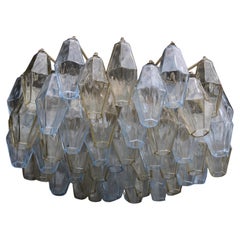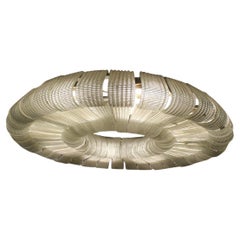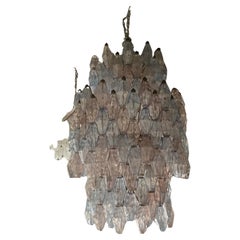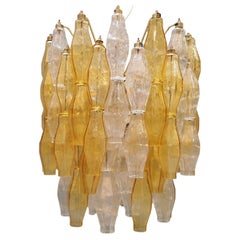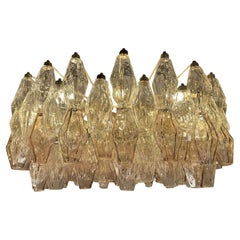Carlo Scarpa Lampadario
Vintage 1950s Italian Mid-Century Modern Chandeliers and Pendants
Metal
Vintage 1930s Italian Art Deco Chandeliers and Pendants
Murano Glass
Vintage 1950s Chandeliers and Pendants
Murano Glass
Recent Sales
Vintage 1970s Italian Mid-Century Modern Chandeliers and Pendants
Glass
Mid-20th Century Italian Flush Mount
Metal
Vintage 1950s Italian Mid-Century Modern Chandeliers and Pendants
Glass
People Also Browsed
2010s Italian Modern Wall Lights and Sconces
Brass
21st Century and Contemporary Swedish Mid-Century Modern Table Lamps
Textile
2010s German Mid-Century Modern Chandeliers and Pendants
Brass
21st Century and Contemporary Italian Mid-Century Modern Chandeliers and...
Brass
21st Century and Contemporary Italian Art Deco Wall Lights and Sconces
Brass
2010s Italian Mid-Century Modern Chandeliers and Pendants
Brass
Vintage 1930s Italian Art Deco Wardrobes and Armoires
Metal, Brass
2010s French Modern Wall Lights and Sconces
Alabaster, Bronze
Vintage 1930s Italian Art Deco Lanterns
Blown Glass
20th Century Italian Mid-Century Modern Chandeliers and Pendants
Murano Glass
1990s Italian Mid-Century Modern Chandeliers and Pendants
Brass
2010s French Modern Chandeliers and Pendants
Ceramic
2010s Italian Modern Chandeliers and Pendants
Brass
2010s Italian Mid-Century Modern Chandeliers and Pendants
Brass
2010s Italian Modern Chandeliers and Pendants
Alabaster, Brass
2010s Italian Modern Chandeliers and Pendants
Brass
Carlo Scarpa Lampadario For Sale on 1stDibs
How Much is a Carlo Scarpa Lampadario?
Carlo Scarpa for sale on 1stDibs
Carlo Scarpa was born in Venice in 1906 and became one of the leading figures of architecture and international design during the 20th century. At merely 21 years old — and still a student at the Academy of Fine Arts — Scarpa began working as a designer for master Murano glassmaker M.V.M. Cappellin. Within a few years, he completely revolutionized the approach to art glass.
In a short time, under the guidance of Scarpa, the Capellin furnace not only established itself as the top glass company, but above all it introduced modernity and international fame to Murano glassmaking. Scarpa created a personal style of glassmaking, a new vision that irreversibly changed glass production.
The young Scarpa experimented with new models and colors: his chromatic combinations, impeccable execution and geometric shapes became his modus operandi. Thanks to Scarpa’s continuous research on vitreous matter, Cappellin produced a series of high-quality glass objects, that saw the company revisiting ancient processing techniques such as the watermark and Phoenician decoration.
When he encountered the challenge of opaque glass, Scarpa proposed introducing textures of considerable chromatic impact, such as glass pastes and glazed glass with bright colors. Scarpa also collaborated in the renovation of Palazzo da Mula in Murano, the home of Cappellin. At the academy, he obtained the diploma of professor of architectural design and obtained an honorary degree from the Venice University Institute of Architecture of which he was director.
In 1931, Scarpa's collaboration with Cappellin ended, following the bankruptcy of the company because it was not able to withstand the economic crisis linked to the Great Depression. But Scarpa did not go unnoticed by Paolo Venini — in 1933, the young designer became the new artistic director of the biggest glass company in Murano.
Master glassmakers thought Scarpa's projects and sketches were impossible, but the passionate and curious designer always managed to get exactly what he wanted. Until 1947 he remained at the helm of Venini & Co., where he created some of the best known masterpieces of modern glassmaking. Scarpa’s work with Venini was characterized by the continuous research on the subject, the use of color and techniques that he revisited in a very personal way, and the development of new ways of working with master glassmakers.
At the beginning of the 1930s, "bubble", "half filigree" and "submerged" glass appeared for the first time on the occasion of the Venice Biennale of 1934. A few years later, at the Biennale and the VI Triennale of Milan, Venini exhibited its lattimi and murrine romane pieces, which were born from a joint idea between Scarpa and Paolo Venini.
In 1938 Scarpa increased production, diversifying the vases from "objects of use" to sculptural works of art. In the same year he laid the foundation for the famous "woven" glass collection, exhibited the following year. In the subsequent years, Scarpa–Venini continued to exhibit at the Biennale and in various other shows their the "black and red lacquers," the granulari and the incisi, produced in limited series, and the "Chinese," which was inspired by Asian porcelain.
Scarpa's creations for Venini garnered an international response and were a great success, leaving forever an indelible mark on the history of glassmaking. The last Biennale in which Carlo Scarpa participated as artistic director of Venini was in 1942. He left the company five years later.
The time that Scarpa spent in the most important glass factory in Murano would attach a great artistic legacy to the company. His techniques and styles were resumed in the postwar period under the guidance of Tobia Venini, Paolo's son. In the 1950s, after the departure of Scarpa, Fulvio Bianconi was the new visionary at the Biennials with Venini.
On 1stDibs, vintage Carlo Scarpa glass and lighting are for sale, including decorative objects, tables, chandeliers and more.
(Biography provided by Ophir Gallery Inc.)
Finding the Right Lighting for You
The right table lamp, outwardly sculptural chandelier or understated wall pendant can work wonders for your home. While we’re indebted to thinkers like Thomas Edison for critically important advancements in lighting and electricity, we’re still finding new ways to customize illumination to fit our personal spaces all these years later. A wide range of antique and vintage lighting can be found on 1stDibs.
Today, lighting designers like the self-taught Bec Brittain have used the flexible structure of LEDs to craft glamorous solutions by working with what is typically considered a harsh lighting source. By integrating glass and mirrors, reflection can be used to soften the glow from LEDs and warmly welcome light into any space.
Although contemporary innovators continue to impress, some of the classics can’t be beat.
Just as gazing at the stars allows you to glimpse the universe’s past, vintage chandeliers like those designed by Gino Sarfatti and J. & L. Lobmeyr, for example, put on a similarly stunning show, each with a rich story to tell.
As dazzling as it is, the Arco lamp, on the other hand, prioritizes functionality — it’s wholly mobile, no drilling required. Designed in 1962 by architect-product designers Achille & Pier Giacomo Castiglioni, the piece takes the traditional form of a streetlamp and creates an elegant, arching floor fixture for at-home use.
There is no shortage of modernist lighting similarly prized by collectors and casual enthusiasts alike — there are Art Deco table lamps created in a universally appreciated style, the Tripod floor lamp by T.H. Robsjohn-Gibbings, Greta Magnusson Grossman's sleek and minimalist Grasshopper lamps and, of course, the wealth of mid-century experimental lighting that emerged from Italian artisans at Arredoluce, FLOS and many more are hallmarks in illumination innovation.
With decades of design evolution behind it, home lighting is no longer just practical. Crystalline shaping by designers like Gabriel Scott turns every lighting apparatus into a luxury accessory. A new installation doesn’t merely showcase a space; carefully chosen ceiling lights, table lamps and floor lamps can create a mood, spotlight a favorite piece or highlight your unique personality.
The sparkle that your space has been missing is waiting for you amid the growing collection of antique, vintage and contemporary lighting for sale on 1stDibs.
